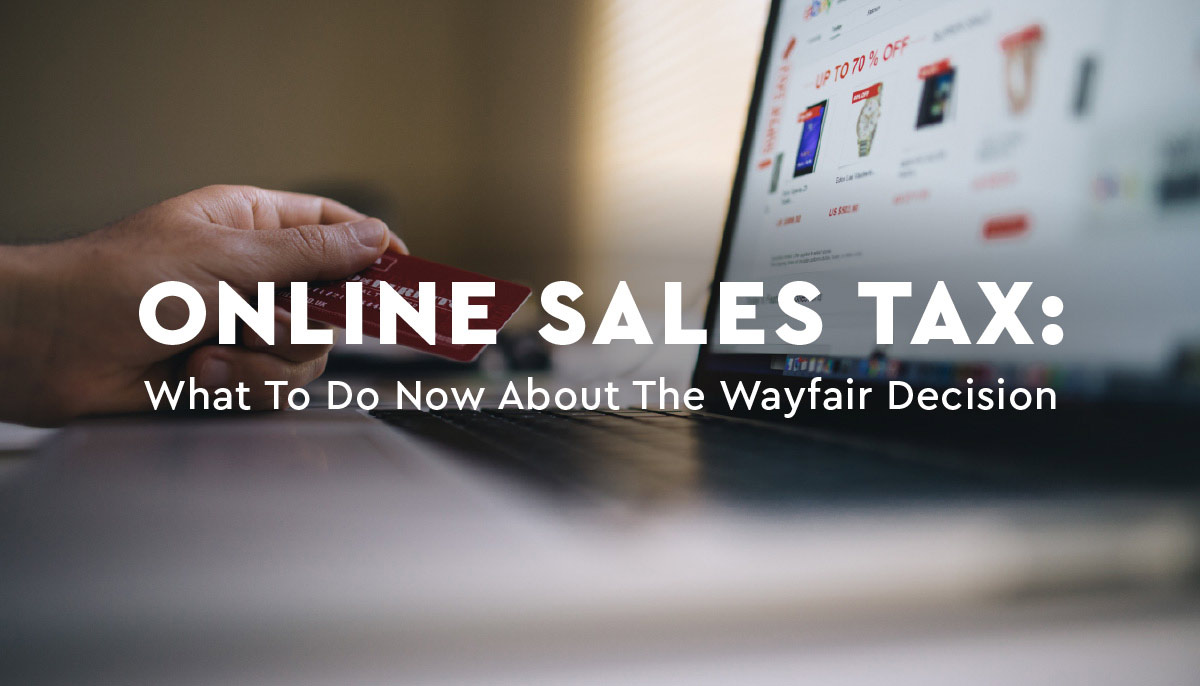
Online Sales Tax: What to do Now About the Wayfair Decision
Has the Wayfair decision left you scratching your head? You’re not alone. Earlier this summer, the U.S. Supreme Court’s landmark South Dakota vs. Wayfair decision reversed the dated “physical presence” rule. States are now allowed to require online sellers to collect and remit sales tax. However, it’s now more than a month later, and, for the most part, neither states nor retailers have a clear path forward.
Who is Impacted?
While this decision was considered by some to be a victory for brick-and-mortar retailers as much as states, others argue the reality that more and more retailers are multi-channel merchants who also sell online. Matthew Schaefer, a representative of Wayfair and the other companies involved in this lawsuit, stated in a recent MCM CommerceChat that the number of small businesses online is expected to be around 90% by the end of the year.

According to eMarketer, U.S. retail eCommerce sales will represent 10% of total retail sales this year, reaching an estimated $525.69 billion. As Justice Anthony Kennedy states within the ruling, “The internet’s prevalence and power have changed the dynamics of the national economy.” Whether you’re an online-only retailer or a brick-and-mortar seller, the growing eCommerce industry will likely require you to confront this new requirement at some point.
A Compliance Nightmare
The Wayfair decision was expected to provide long awaited clarity around the future of state sales tax for an ever-growing eCommerce market. Instead, the ruling has resulted in a whole new set of questions. Sellers will be required to navigate a complex set of requirements that will vary between the 45 states collecting sales tax. Things like thresholds (for example, a $100k threshold in South Dakota vs. $500K in Massachusetts), measurement periods (are businesses supposed to base thresholds on the current year’s revenues or prior years?), and effective dates (which states are effective July 1? October 1? Another yet-to-be-determined date?) will be set on a state-by-state basis. These variations have left online retailers wondering how they will navigate thousands of jurisdictions with potentially as many rules to comply with.
What to do Right Now
Though most states are still in the process of finalizing their thresholds and other guidelines, there are a number of things you can be doing in the meantime to ensure you’re prepared to collect when the time comes. In a past webinar, Vertex Inc.’s Chief Tax Officer, Michael Bernard, offered some key areas to focus on internally right now:
- Figure out what your gross revenues are in the places you sell to remotely and keep a close eye on the economic thresholds those states enforce.
- In addition to tracking revenue, track the number of transactions you perform in these states as thresholds will include a minimum number of transactions. South Dakota’s threshold is 200 transactions.
- Put together a plan for how you’re going to comply with these thresholds that includes a hosted or cloud solution, if you don’t already have one in place.
- Focus on states where you’ll have the highest liability and monitor their progress.
- Ensure timely reporting practices are in place to avoid having to book a reserve on your financial statements.
Still confused? Don’t let compliance concerns hold your business back online. Send us a note to get in contact with a PFS tax expert and understand how our Payment Processing solution can help your business navigate the complex ruling.


